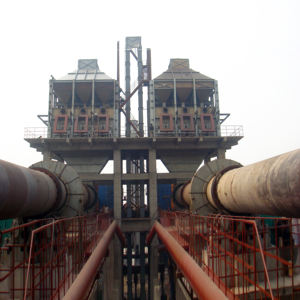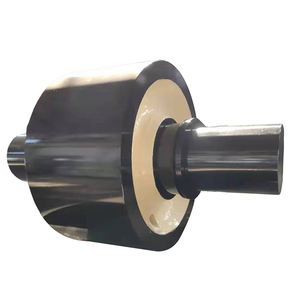**Transcontinental Transport: Shipping Heavy Machinery Through Time**
(Transcontinental Transport: Shipping Heavy Machinery Through Time)
The transportation of heavy machinery across continents has been a cornerstone of industrial progress, enabling the global exchange of technology, infrastructure development, and economic growth. From the early days of industrialization to the modern era of advanced logistics, the methods and challenges of shipping heavy machinery have evolved significantly. This article explores the historical context, technological advancements, and contemporary strategies involved in transcontinental transport of heavy machinery.
### Historical Context: The Birth of Heavy Machinery Transport
The industrial revolution of the 18th and 19th centuries marked the beginning of large-scale manufacturing and the need to transport heavy machinery. Early methods relied on rudimentary techniques, such as horse-drawn carts and wooden sledges, which were limited in capacity and efficiency. The advent of steam-powered locomotives and ships in the 19th century revolutionized the transportation of heavy equipment, allowing for faster and more reliable movement across land and sea.
During this period, the construction of railways and canals played a pivotal role in facilitating the transport of heavy machinery. For instance, the Erie Canal in the United States and the Suez Canal in Egypt became critical arteries for moving industrial equipment between continents. However, these methods were still constrained by the limitations of infrastructure and the lack of standardized shipping practices.
### Technological Advancements: The Rise of Modern Logistics
The 20th century witnessed unprecedented advancements in transportation technology, which transformed the logistics of shipping heavy machinery. The development of specialized vehicles, such as flatbed trucks, heavy-lift cranes, and modular trailers, enabled the efficient handling of oversized and overweight loads. Additionally, the introduction of containerization in the mid-20th century standardized the shipping process, reducing costs and improving reliability.
Air freight also emerged as a viable option for transporting heavy machinery, particularly for time-sensitive projects. While air transport is more expensive than sea or land options, it offers unparalleled speed and flexibility. For example, the delivery of critical machinery for disaster relief or urgent infrastructure projects often relies on air freight to meet tight deadlines.
Maritime transport, however, remains the most cost-effective and widely used method for transcontinental shipping of heavy machinery. Modern cargo ships are equipped with advanced loading and unloading systems, such as roll-on/roll-off (RoRo) and heavy-lift vessels, which can accommodate massive equipment with ease. Furthermore, the use of GPS and real-time tracking systems has enhanced the safety and efficiency of maritime logistics.
### Contemporary Challenges and Solutions
Despite the advancements in technology, shipping heavy machinery across continents continues to present significant challenges. One of the primary obstacles is the sheer size and weight of the equipment, which often exceeds the capacity of standard transportation infrastructure. This necessitates careful route planning, permits, and coordination with local authorities to ensure compliance with regulations.
Another challenge is the risk of damage during transit. Heavy machinery is often highly sensitive to vibrations, temperature fluctuations, and moisture, which can compromise its functionality. To mitigate these risks, engineers and logistics experts employ specialized packaging techniques, such as shock-absorbing materials and climate-controlled containers. Additionally, comprehensive insurance coverage is essential to protect against potential losses.
Environmental concerns have also become a critical consideration in modern transcontinental transport. The shipping industry is under increasing pressure to reduce its carbon footprint and adopt sustainable practices. Innovations such as fuel-efficient vessels, alternative energy sources, and optimized routing algorithms are being implemented to minimize environmental impact.
### The Future of Heavy Machinery Transport
Looking ahead, the future of transcontinental transport of heavy machinery is poised to be shaped by emerging technologies and evolving global demands. Automation and artificial intelligence are expected to play a significant role in streamlining logistics operations, from route optimization to predictive maintenance. Autonomous ships and trucks, for instance, could revolutionize the industry by reducing human error and operational costs.
Moreover, the growing emphasis on sustainability is likely to drive the adoption of green technologies in the shipping sector. Electric and hybrid vehicles, as well as renewable energy-powered vessels, are being developed to reduce emissions and align with global climate goals. These innovations will not only enhance the efficiency of heavy machinery transport but also contribute to a more sustainable industrial ecosystem.
### Conclusion
(Transcontinental Transport: Shipping Heavy Machinery Through Time)
The transcontinental transport of heavy machinery has come a long way since the early days of industrialization. From the rudimentary methods of the past to the sophisticated logistics systems of today, the industry has continually adapted to meet the demands of a rapidly changing world. As technology continues to advance and global challenges evolve, the transportation of heavy machinery will remain a vital component of industrial progress, connecting continents and driving economic growth. By embracing innovation and sustainability, the industry can ensure a resilient and efficient future for transcontinental transport.


